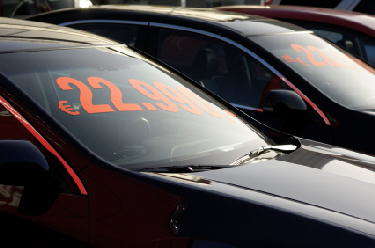Recent Articles
Popular Makes
Body Types
List Price vs. Sticker Price vs. Dealer Price

If you are at the start of the car buying process, you are probably overwhelmed – particularly if you have never done this before. Obviously, you want to get the best price possible but you also want to get the car that you need and will be fun to drive. It can be difficult to sort through all the different types of vehicles, with so many different ratings, feature and accessories. One of the most confusing areas of buying a car is the jargon or car talk as some call it. When it comes to money, you need to be very clear that you understand these terms. These can be difficult to understand considering that many car dealerships use different prices to explain the deal you are getting. That's why it is important to become better informed when looking at purchasing a new car. You are helping yourself to get a better deal. By law, the dealership is responsible for making sure that you understand and have the necessary information required to purchase your new car. This is called the Monroney Law and was passed I 1958. This law is officially called the Monroney Act of 1958. This law states that a sticker called the Monroney sticker is required to be on all new cars and can't be removed by any dealer. The fine for not having this sticker on the front or side window is $10,000 per vehicle. Any tampering with the sticker also carries a heavy fine. This sticker is important in that it must including several things: • Manufacturer's Suggested Retail price (also referred to as MSRP or Sticker Price or List Price) • Manufacturers' suggested price for each accessory • Make • Model • Standard options • The final assembly point • And several other items The manufacturer of an automobile suggests the price hence the manufacturer suggested retail price or MSRP. This price does not include the taxes, title, delivery or any other options that may have been added to the vehicle. The base price is listed on the sticker in the window. There, and are all the same price. When a dealership purchases a vehicle from a manufacture, they are invoiced for the price of the car. This is called the This doesn't make it the actual price the dealership is going to pay because there are a lot of rebates, discounts and holdbacks involved that lowers the actual cost that the dealer is going to pay. This invoice cost should include delivery and destination charges. This invoice price may increase with the factory-installed options. The actual price you will pay depends on market conditions, like demand for the vehicle. To help you understand, consider that a car dealer is a 'reseller' of cars. The dealer buys them from manufacturers like Ford and General Motors then puts them on the lot with the MSRP or 'sticker price'. The mark-up isn't the issue because the dealer is entitled to make a profit; similarly, you are entitled to knock it down. You should never pay more than 3-5% above the invoice price. Learn what the dealer invoice cost is and use that figure as a place to start your negotiations. You need to remember that all the add-on options are marked up in the same way. So don't go and pay MSRP on the extras like sunroofs, leather trim etc. Find out the invoice prices and do the same thing. When buying a new vehicle all the different types of prices are confusing. Remember the differences between these and they will help you to make the best decision. As always, do your research before buying.